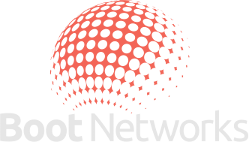Phishing Attack Prevention: How to Identify & Avoid Phishing Scams in Office 365 Email

If you rely heavily on e-mail you will have to know the basics of phishing attack prevention. Even if a message appears to come from someone you know, spoofing a senders address in an email allows hackers to gain your trust. If you treat that email as a request from a reputable source you are more likely to click on an embedded link that takes you to a fake website that requests things like your username and password or other sensitive information. A file attached to an e-mail message phishing scam could contain a virus. NEVER open these or allow them to run on your computer!
“Phishing” is the most common type of cyber-attack that affects organizations like yours. Phishing attacks can take many forms, but they all share a common goal – getting you to share sensitive information such as login credentials, credit card information, or bank account details. Although we maintain controls to help protect our networks and computers from cyber threats, we rely on you to be our first line of defense. We’ve outlined a few different types of phishing attacks to watch out for:
- Phishing: In this type of attack, hackers impersonate a real company to obtain your login credentials. You may receive an e-mail asking you to verify your account details with a link that takes you to an imposter login screen that delivers your information directly to the attackers.
- Spear Phishing: Spear phishing is a more sophisticated phishing attack that includes customized information that makes the attacker seem like a legitimate source. They may use your name and phone number and refer to Alvarado Pacific Insurance in the e-mail to trick you into thinking they have a connection to you, making you more likely to click a link or attachment that they provide.
- Whaling: Whaling is a popular ploy aimed at getting you to transfer money or send sensitive information to an attacker via email by impersonating a real company executive. Using a fake domain that appears similar to ours, they look like normal emails from a high-level official of the company, typically the CEO or CFO, and ask you for sensitive information (including usernames and passwords).
- Shared Document Phishing: You may receive an e-mail that appears to come from file-sharing site like SharePoint alerting you that a document has been shared with you. The link provided in these e-mails will take you to a fake login page that mimics the real login page and will steal your account credentials.What You Can DoTo avoid these phishing schemes, please observe the following email best practices:
- Do not click on links or attachments from senders that you do not recognize. Be especially wary of .zip or other compressed or executable file types.
- Do not provide sensitive personal information (like usernames, passwords, personal information or financial information) over email.
- Watch for email senders that use suspicious or misleading domain names.
- Inspect URLs carefully to make sure they’re legitimate and not imposter sites.
- Do not try to open any shared document that you’re not expecting to receive.
- If you are unsure, be sure to contact the sender by some other means to gain added assurance that the attachment is valid.
Be especially cautious when opening attachments or clicking links if you receive an email containing a warning banner indicating that it originated from an external source.
Here is a little video I put together so when in doubt you can use this test.

